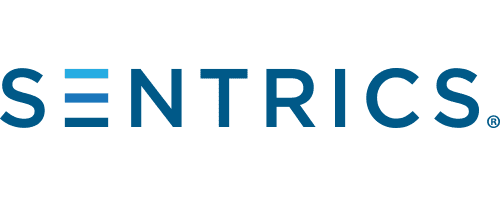Senior living communities are constantly seeking new ways to create efficiencies and improve their operations. The end goal is always the same: improve the resident experience.
Overwhelmingly, the communities that are succeeding share one thing in common—they’re strategically integrating new technologies that allow them to engage residents in entirely new ways.
Do you want to improve your operations and bolster resident care? Then you need to reinvent your strategies for independent living around engagement.
Strategies Senior Living Communities Should Be Implementing
In a care-based, senior living community, resident engagement is paramount. But these days, there’s a whole lot more to it than simply keeping aging residents distracted or entertained. Dr. Michelle Holleran, a leading consultant in the senior living field, writes that there are four key dimensions to resident engagement:
- Giving resident a say in community affairs
- Providing wellbeing and security
- Driving purpose and fulfillment
- Facilitating inclusion and acceptance
As Holleran has discovered, offering a wide range of activities will no longer suffice. Residents, families, and staff demand more, which means you need to think more about your senior living strategy as a whole. More voice, wellbeing, security, purpose, fulfillment, inclusion, and acceptance must be fundamental to the way you manage your senior housing community.
These days, there are several ways your community can leverage technology to fulfil these four aspects of engagement in your senior living community.
Giving Resident a Say in Community Affairs
Do you want your aging residents to be engaged with their care and community at your senior housing center?
Then actively welcome and encourage resident input and feedback, especially when it comes to new technology. If a community decision involves residents, include them in the conversation and make sure that their opinions and suggestions are heard. This way, they’ll feel a sense of independence in their retirement community.
Most seniors aren’t far removed from being the movers and shakers of society. Many are retired doctors, C-suite executives, or come from related professions-each bringing his or her own wealth of knowledge, experience, and wisdom to a senior living facility. Don’t waste that gift. Use it to improve your senior care services.
So, what are the strategies you can use to give residents a voice when it comes to technology adoption?
- Create technology boards – Councils or groups of residents offer senior living communities a representative body that speaks on their behalf. Consider creating technology boards that allow a select group of seniors the opportunity to evaluate new technologies that are intended to improve their care or experience.
- Build beta testing groups – If you have some tech-savvy residents, consider enlisting a volunteer group of beta testers. They can provide invaluable feedback on any new technological implementation for your independent living, memory care, or assisted living facility. Should you choose to partner with a technology solution, you can then leverage the test group to be early adopters and advocates. They master the technology and then encourage others in the community to do the same.
When residents feel ignored, they tend to disengage. This discontentment is then aimed at their own families and neighboring residents. However, by including them in the planning process, you increase engagement while preventing any mishaps associated with the adoption of new technology.
Providing Wellbeing and Security
The convergence of hospitality and healthcare within senior living communities has combined the responsibilities of both resident wellbeing and security. It has forced the need for better visibility over residents’ daily activities, medical history, behavioral patterns, and overall health. Additionally, the technology needed to track and implement this data cannot sacrifice engagement.
Instead, it should encourage it.
There are several ways you can utilize integrated senior living technology to aid resident physical and mental health, including:
- Real time location services (RTLS) – RTLS systems give caregivers and family members peace of mind knowing that residents are safe and accounted for at all times. Common uses include:
- Location protocol management alerts staff that a resident is somewhere they shouldn’t be
- Geofencing helps staff identify a resident’s location within the facility
- Wander detection prevents seniors from walking away from the facility without permission
- Access to multiple healthcare options – Integration of and access to EMR data is an essential way residents can monitor health trends, understand changes, and add EMR dispositions right from their room. In addition, telehealth services provide residents with a convenient, safe, and virtual way to consult with their physician.
- Contact Tracing – In light of COVID-19, residents at senior living communities must be assured that they’re protected from the virus. Thanks to modern technologies, contact tracing is one of the best ways to keep residents safe. Communities need to be able to:
- Quickly identify who’s been exposed, when, where, and for how long
- See the total exposure visually, and drill down on residents and rooms a
- Quarantine residents or employees swiftly
- Ensure that security perimeters aren’t breached
- Identify when room occupancies have been exceeded and alert a caregiver to move people
These technologies enhance what the human eye can’t see, and can also predict what residents might do next. This allows care staff to anticipate and act to prevent an adverse event before it can occur. For seniors and their families, this oversight helps provide peace of mind that their health and security are being looked after.
Driving Purpose and Fulfillment
After retirement, seniors are often overwhelmed by their surplus of free time. If they’re not actively engaged with their community, they tend to socially withdraw and isolate themselves. As multiple studies have shown, isolation and lack of social interaction leads to:
- Accelerated cognitive decline
- Depression
- Risky behaviors
- Improper medication management
- Higher mortality rates
To prevent these negative outcomes, it’s vital that residents are kept physically, emotionally, and mentally engaged with multimodal activities—both online and in person—such as:
- Community events – BINGO, movie night, off-site excursions
- Online activities – retirement home TV programming, resident chatting, private activities
- Family activities – Video conferencing, online chatting, photo sharing, on-site visits
Filling residents’ time with rewarding activities isn’t enough. To address senior behavioral issues, particularly those stemming from a lack of purpose and fulfillment, you must also be able to gauge residents’ moods.
Whether it’s a mood indicator to track daily trends or access to behavioral health assessments and education, several technologies can help caregivers, residents, and family members chart behavioral patterns and support resident mental health, including:
- Virtual coaching and mental health counseling
- Music therapy using clinically proven music
- Streaming faith and spiritual wellness services
Inclusion and Acceptance
The final aspect of resident engagement is inclusion and acceptance. A sense of belonging is a fundamental human need, but one that’s especially important in a senior living community. When residents feel ostracized or unincluded—whether for their lack of physical health or for some other immutable characteristic—the results are seldom good.
Humans are social creatures. We thrive in community with one another, but often wither on our own. Senior living communities must find ways to ensure that residents feel like they’re a part of the family, a valued member of the community.
Dr. Jaya Seenichamy, an elderly mental health specialist, warns of the severe consequences of exclusion, “When one’s self-image is negatively impacted, we see rapid decline. When people are ostracized or marginalized they will compensate in some way. Some become aggressive, some self-isolate, some end up with depression and anxiety.”
Many senior living communities are turning to technology to combat this issue proactively. These platforms can help engage residents where they are, track their activities and habits, and identify behavioral changes that require redress. This prevents small concerns from turning into larger issues, while providing an added bonus: It does this without hiring more people for your senior living facility. This is especially true when communities are managing infectious diseases, which remove caregivers from a 1:many interaction to a 1:1 interaction with residents.
Senior Living Community Engagement Strategies
If your goal is to keep your individual residents and the entire senior living community healthy, then it’s important to make sure that they’re properly engaged. Today, technology can help you ensure that your senior living community environment:
- Gives resident a say in community affairs
- Provides wellbeing and security
- Drives purpose and fulfillment
- Facilitates inclusion and acceptance
Inspire these four aspects of engagement, and your residents will live happier, healthier, and more fulfilled lives in your senior living community.
Sources:
- McKnight’s Senior Living. Prepare now for the coming shift in resident engagement. https://www.mcknightsseniorliving.com/home/columns/guest-columns/prepare-now-for-the-coming-shift-in-resident-engagement/
- Sage Journals. Loneliness and Social Isolation as Risk Factors for Mortality: A Meta-Analytic Review. https://journals.sagepub.com/doi/abs/10.1177/1745691614568352?journalCode=ppsa
- Leading Age. Creating Inclusivity in Aging Services. https://www.leadingage.org/magazine/septemberoctober-2014/creating-inclusivity-aging-services



